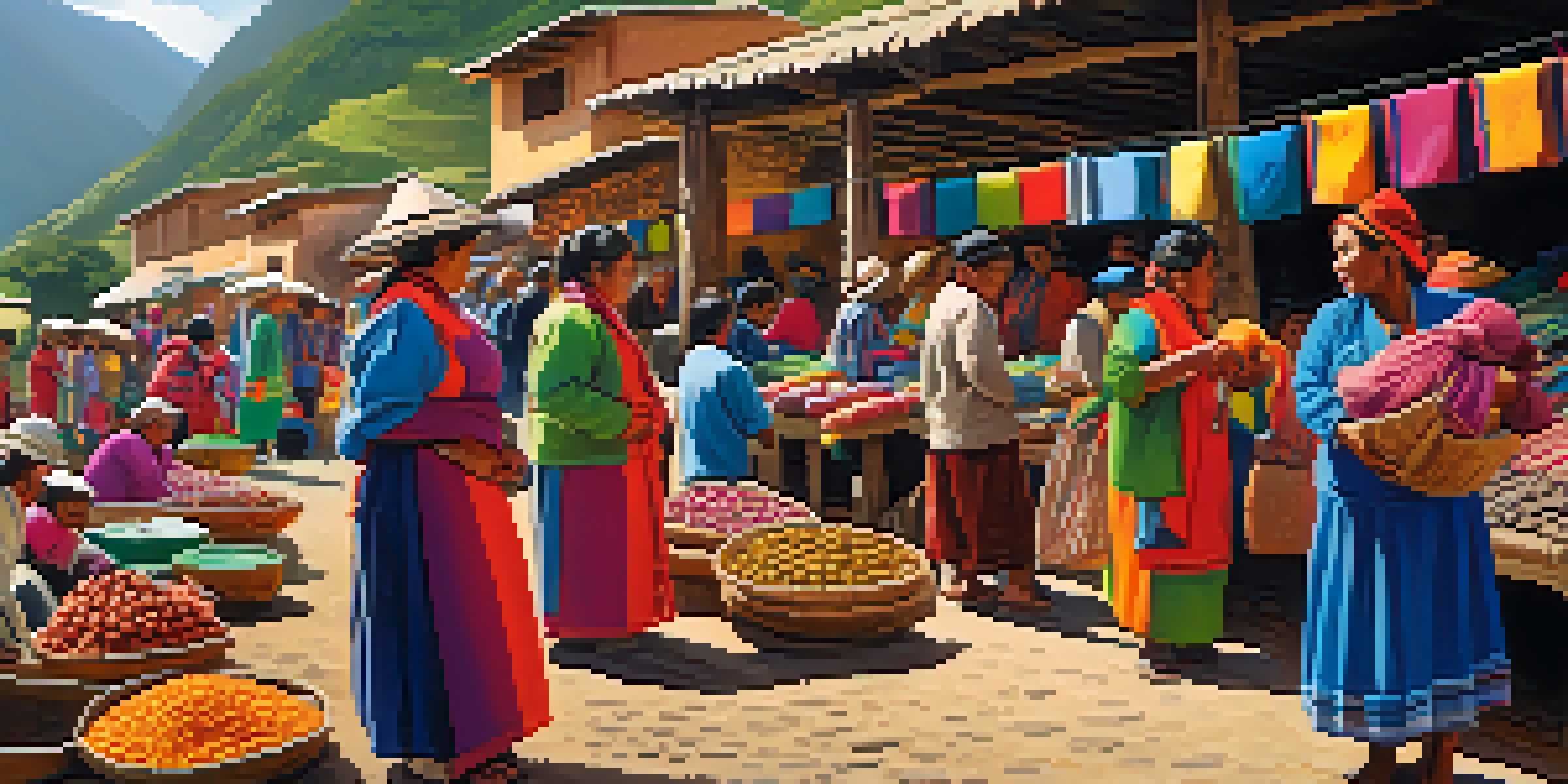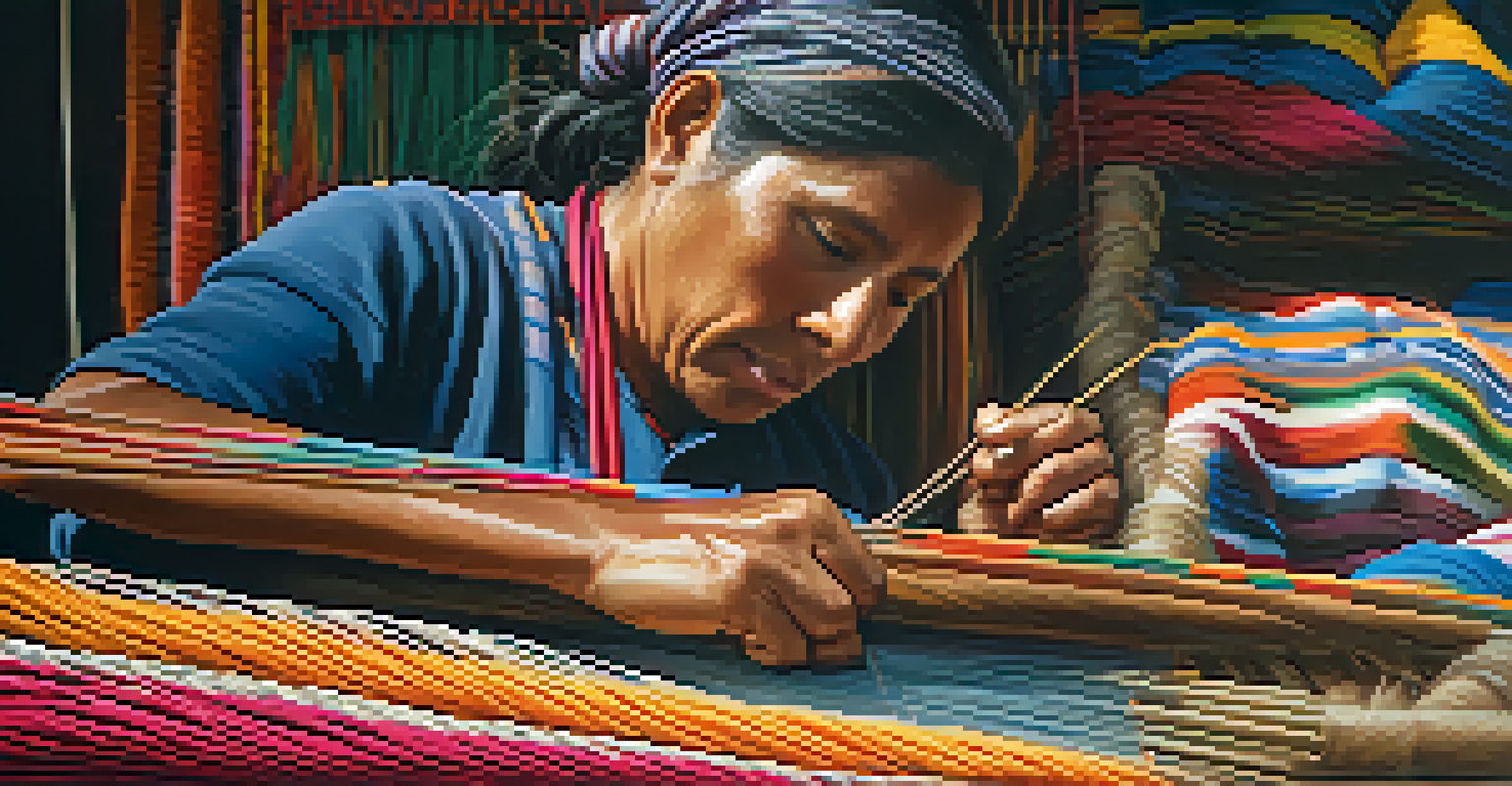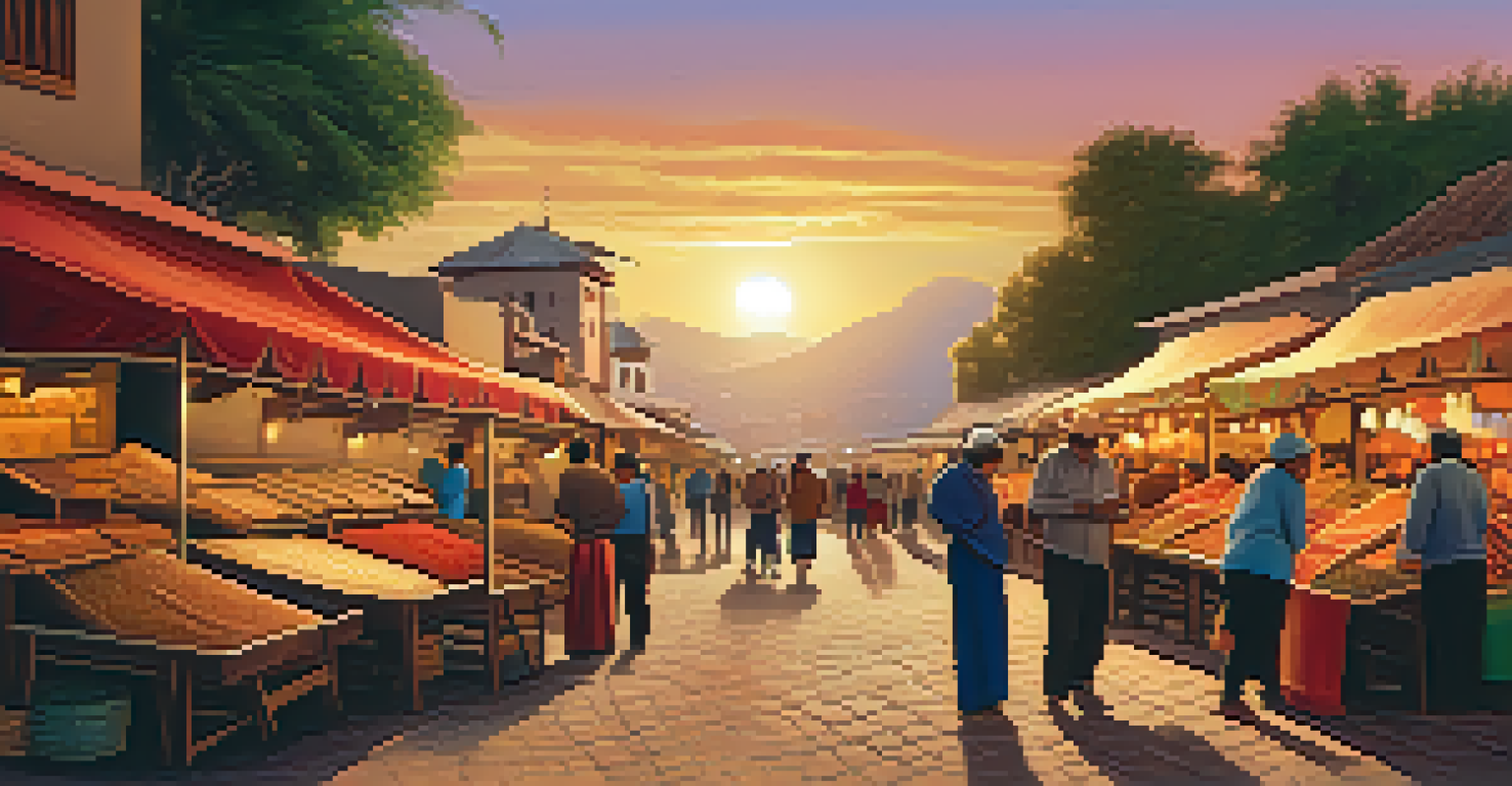The Role of Local Markets in Promoting Peruvian Artisans

Understanding the Local Market Landscape in Peru
Local markets in Peru are vibrant hubs that showcase a rich tapestry of culture and craftsmanship. These markets serve as platforms where artisans can display their unique creations, from textiles to pottery, attracting both locals and tourists alike. The diversity of products reflects the varied traditions and skills of artisans from different regions, making each market a unique experience.
Art is the most beautiful of all lies.
In these bustling environments, the direct interaction between artisans and customers fosters a sense of community and authenticity. Shoppers often seek out handmade goods, craving the personal touch that mass-produced items can’t provide. This demand not only supports local economies but also encourages artisans to continue their craft, preserving cultural heritage.
Moreover, local markets act as a bridge, connecting artisans with consumers who appreciate the story behind each item. When people purchase directly from artisans, they contribute to a sustainable economic model that prioritizes fair trade and ethical practices. This connection enhances the value of the products, allowing artisans to gain recognition and respect for their work.
The Economic Impact of Local Markets on Artisans
Local markets provide a crucial source of income for Peruvian artisans, enabling them to support their families and communities. By selling directly to consumers, artisans retain a larger share of the profits, which can be reinvested into their craft or used to improve their living conditions. This economic boost is vital, especially in rural areas where job opportunities may be limited.

Additionally, local markets create a ripple effect in the economy by attracting tourists who are eager to experience authentic Peruvian culture. As visitors explore these markets, they not only purchase artisanal goods but also contribute to the livelihoods of vendors, food sellers, and other local businesses. This interconnectedness strengthens the economic ecosystem of the region.
Local Markets Boost Artisan Income
Peruvian artisans gain significant income and community support by selling directly at local markets, which helps sustain their families and preserve cultural heritage.
The sustainability of this economic model hinges on the ability of artisans to innovate and adapt their offerings. By responding to market trends and consumer interests, artisans can diversify their products, ensuring ongoing relevance and demand. This adaptability is key to thriving in the ever-changing landscape of local markets.
Cultural Preservation Through Local Artisans
Local markets play an essential role in preserving Peruvian culture and traditions. Artisans often use techniques passed down through generations, creating pieces that reflect their cultural identity. This practice not only honors their heritage but also educates consumers about the significance of these crafts.
Every artist was first an amateur.
Through storytelling and demonstrations at local markets, artisans can share the history and meaning behind their work. This engagement enriches the shopping experience, transforming it into a cultural exchange. Shoppers leave with a deeper appreciation for the artistry and the stories woven into each item.
Furthermore, as artisans gain recognition at local markets, they inspire future generations to pursue traditional crafts. By highlighting the importance of these skills, local markets help ensure that the rich tapestry of Peruvian culture continues to thrive, bridging the gap between past and present.
The Role of Tourism in Supporting Local Markets
Tourism significantly enhances the viability of local markets in Peru, drawing attention to the incredible craftsmanship of artisans. Visitors are often on the lookout for unique souvenirs, and handmade products provide an authentic connection to the country. This interest helps sustain the local economy and keeps artisans motivated to produce their best work.
Local markets frequently serve as the first point of contact for tourists, offering an array of crafts, foods, and experiences that reflect the local culture. Tourists who engage with artisans directly can learn about the creation process, adding value to their purchases and fostering a personal connection to the items they buy.
Tourism Fuels Artisan Exposure
The influx of tourists in local markets enhances visibility for artisans, encouraging authentic connections and increasing sales of handmade goods.
Moreover, the influx of tourists can lead to increased investment in market infrastructure and services. Better facilities and marketing efforts can elevate the overall experience, making local markets more appealing to visitors while benefiting artisans through improved sales and exposure.
Challenges Faced by Peruvian Artisans in Local Markets
Despite the opportunities provided by local markets, Peruvian artisans face numerous challenges. Competition from mass-produced items can undermine their efforts, as consumers may opt for cheaper alternatives without understanding the value of handmade goods. This pressure can lead to financial instability for artisans who rely on market sales.
Additionally, limited access to resources, such as quality materials and marketing support, can hinder artisans' ability to scale their businesses. Many artisans operate on tight budgets, making it difficult to invest in new tools or techniques that could enhance their work. This lack of resources can stifle creativity and innovation.
Furthermore, fluctuating tourist seasons can impact artisan sales, leading to periods of uncertainty. To combat these challenges, artisans need support from local governments and organizations that can provide training, resources, and marketing strategies. Empowering artisans through education and support networks is crucial for their sustainability.
Collaborative Efforts to Elevate Local Artisans
Collaboration between artisans, local governments, and non-profit organizations can create a powerful support system for Peruvian artisans. Programs that focus on skill development and business training equip artisans with the tools needed to thrive in competitive markets. These initiatives foster a sense of community and shared purpose among artisans.
Furthermore, partnerships with local businesses can lead to unique marketing opportunities that elevate artisans' visibility. By showcasing their work in local shops or through online platforms, artisans can reach a broader audience, increasing their chances of making sales. This collaborative approach helps build a sustainable future for artisan communities.
Collaboration Strengthens Artisan Support
Collaborative efforts among artisans, local governments, and organizations create vital support systems that empower artisans through training and marketing opportunities.
Additionally, events like craft fairs or cultural festivals can bring together artisans from various regions, promoting their work to a wider audience. These gatherings not only highlight the diversity of Peruvian craftsmanship but also create a festive atmosphere that encourages cultural exchange. Engaging the public in this way fosters appreciation and support for local artisans.
The Future of Local Markets and Peruvian Artisans
Looking ahead, the future of local markets and Peruvian artisans seems promising, especially with the growing interest in sustainability and unique, handmade products. Consumers are increasingly seeking out artisanal goods that tell a story and represent authentic craftsmanship. This trend presents an opportunity for artisans to thrive in an evolving marketplace.
Moreover, the rise of digital platforms offers artisans new avenues for reaching customers beyond local markets. By leveraging e-commerce and social media, they can showcase their work to a global audience, helping to expand their customer base. This shift could lead to increased sales and greater recognition of Peruvian craftsmanship.

As community support and collaboration continue to grow, local markets can evolve into even more dynamic spaces for artisans. By embracing innovation while honoring tradition, Peruvian artisans can ensure that their craft remains relevant and cherished for generations to come.